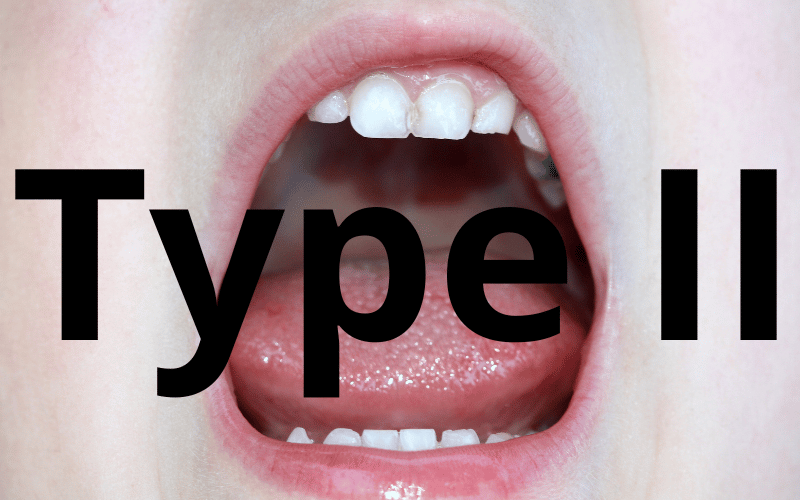Type II: Submucosal Tongue Tie

At first glance, Type II, or submucosal tongue tie, might go unnoticed. Hidden just behind the gum line, it’s like an iceberg – much of its substance lies beneath the surface. However, despite its subtle appearance, its impact on oral functionality is tangible, especially on the middle section of the tongue.
Because of its concealed nature, this tie might elude initial observation, leading many to believe there’s no issue at all. Yet, subtle signs like challenges with certain tongue movements or slight speech impediments can hint at its presence. Professionals often have to rely on tactile examinations, feeling for the tie beneath the mucosal layer.
It’s a silent saboteur. The submucosal tongue tie can lead to challenges in eating, speaking, and even oral hygiene. Food textures that demand intricate tongue movements can become daunting tasks. Over time, this can influence an individual’s dietary choices and eating habits.
But there’s hope. Once diagnosed, the treatment route for submucosal tongue tie isn’t vastly different from its anterior counterpart. A frenectomy can release the tie, but it’s the post-operative care, rehabilitation, and consistent monitoring that ensure long-term success. (2)